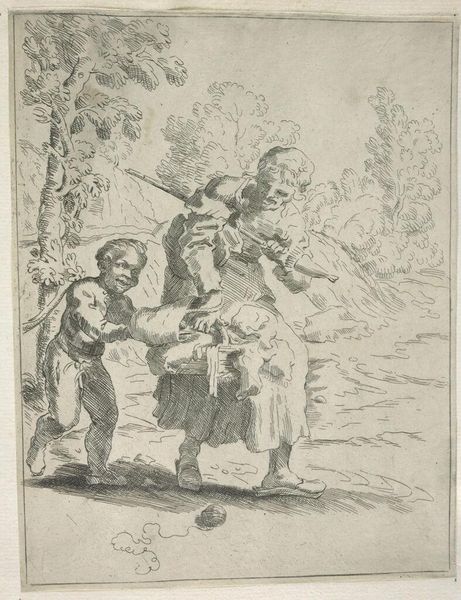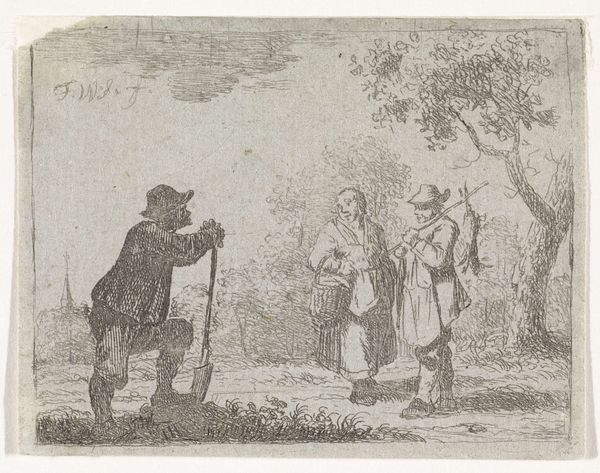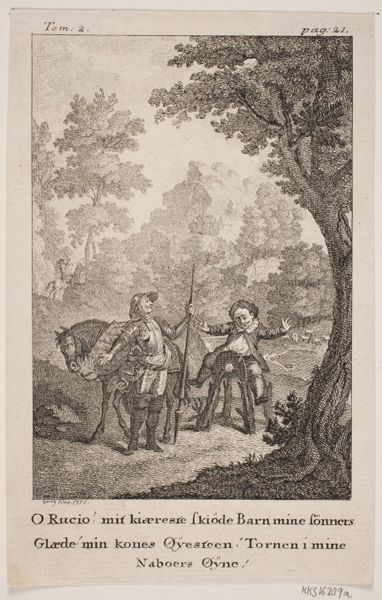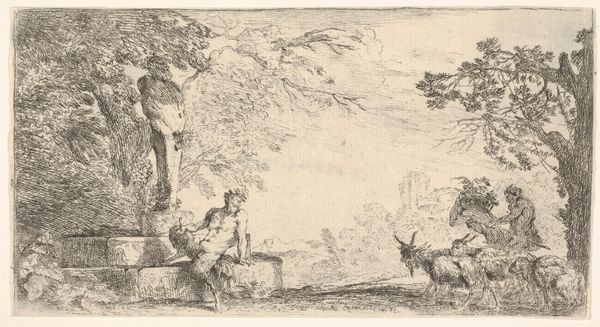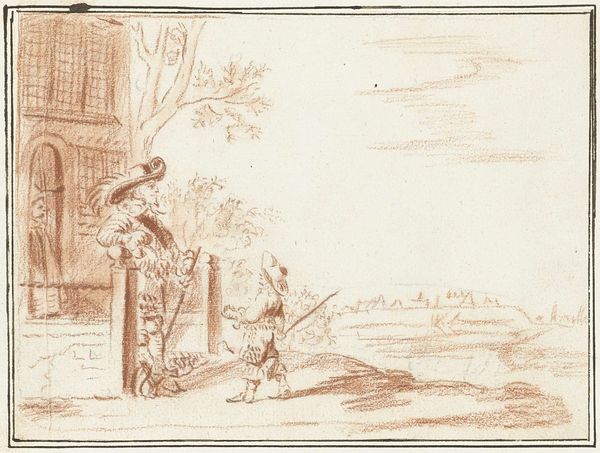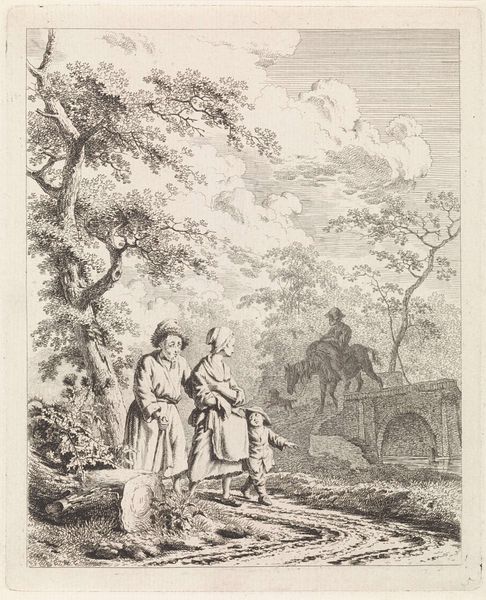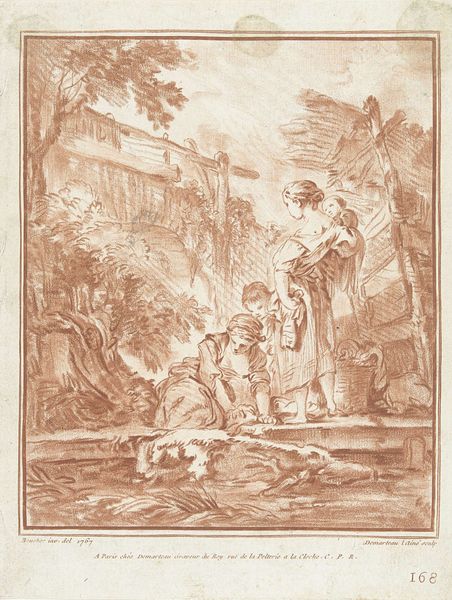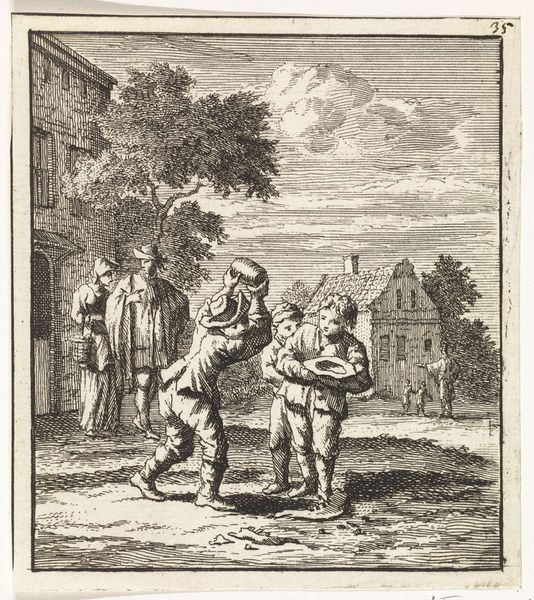
drawing, ink
#
drawing
#
allegory
#
baroque
#
landscape
#
figuration
#
ink
#
genre-painting
Dimensions: height 214 mm, width 184 mm
Copyright: Rijks Museum: Open Domain
Editor: Here we have "Allegorische voorstelling met spelende kinderen," an ink drawing by Johann Heinrich Keller, dating roughly from 1702 to 1765. I’m struck by the playful energy; it feels like a snapshot of a very particular kind of aristocratic childhood. How would you interpret this work? Curator: I see this drawing as deeply embedded in the 18th-century understanding of childhood and its connection to social ideals. The "genre-painting" aspect points to a fascination with everyday life, but elevated through allegory. These children aren't just playing; they're performing roles, reflecting the social expectations of their class. Editor: Performing roles? How so? Curator: Consider the landscape. It's not a wild, untamed space, but a cultivated garden – a space shaped by human will, much like these children are being shaped by their upbringing. And look at the objects they are using, seemingly paddles or perhaps even mirrors. What purpose do you believe these may represent? Editor: Perhaps…vanity? Or maybe reflections of societal values? Curator: Precisely. This drawing speaks to the Baroque era’s complex relationship with innocence, nature, and societal expectations. It’s about presenting a carefully constructed image of harmony and order, even in leisure. The medium, ink drawing, also reflects the aristocratic tastes for draftsmanship as evidence of intellect. Do you see it aligning with that broader cultural framework now? Editor: I do. The setting is crucial. Without the cultivated landscape, the reading would shift entirely. It's interesting to consider how the socio-political environment directly shapes the way childhood is portrayed in art. Curator: Exactly! It’s not just a charming scene, but a document of its time, reflecting how the elite class wanted to be perceived. We see here how art actively shapes and reinforces social constructs. Editor: I never would have looked at it that way initially, so thank you! It makes me think about what’s not visible too—the labor and social structures supporting this idyllic scene.
Comments
No comments
Be the first to comment and join the conversation on the ultimate creative platform.
